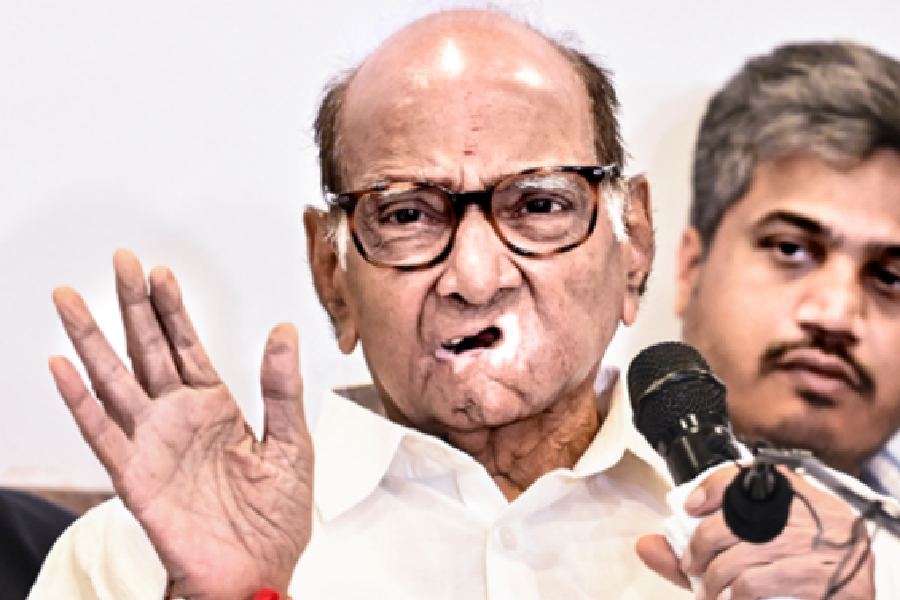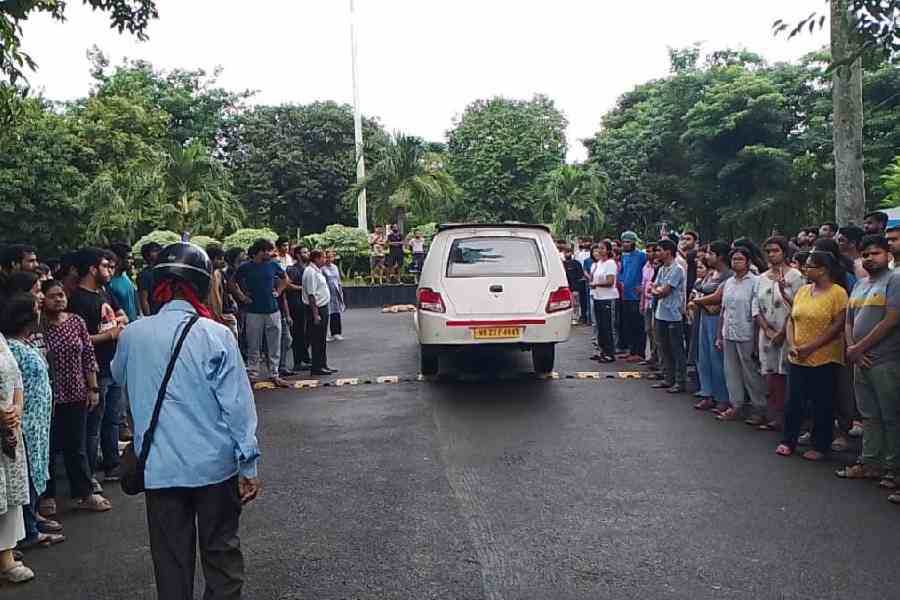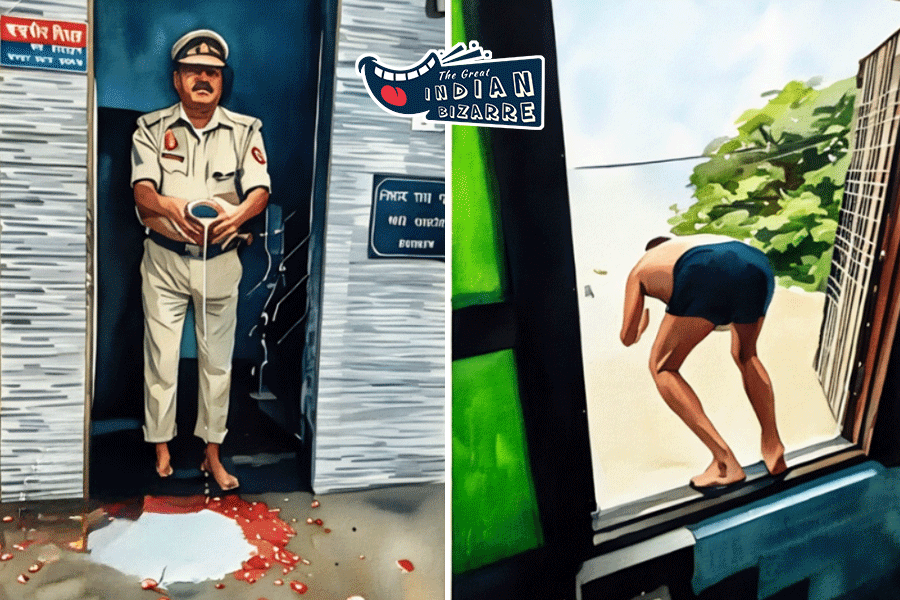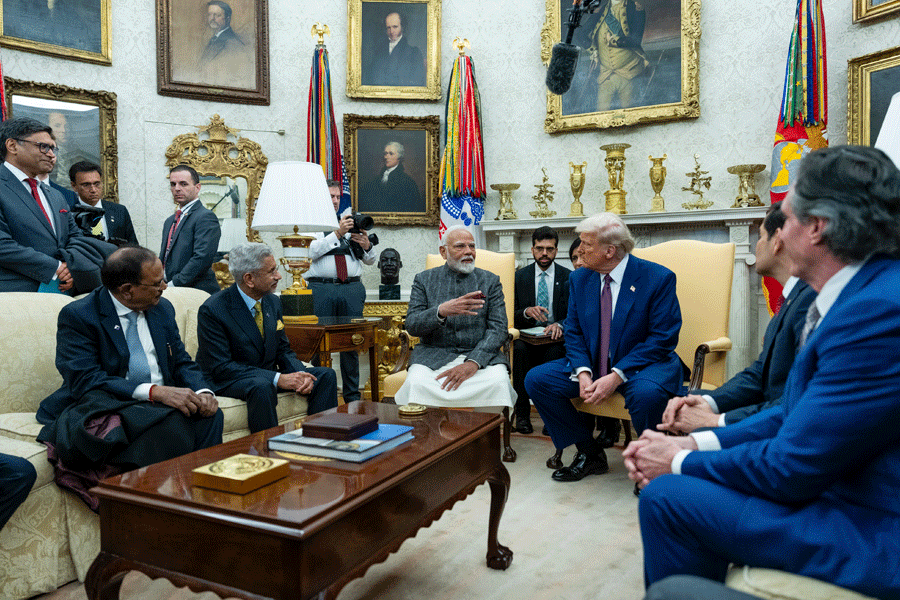 |
| From left: Jang, Kim and Lee get their stances ready before the performance. Picture by Pradip Sanyal |
Lee Jung Hee looks much younger than her 28 years. Rehearsing her steps in a pair of jeans and T-shirt, she transforms herself into a queen in a jiffy, donning an elaborate hwal ot (ornamental crown). In Calcutta since Sunday, Lee may have been having fun, shopping for shoes and clothes and visiting museums, but no. She is here on a mission.
Lee, along with friends Kim Jung Eun, Jang Ji Youn and others of the 27-strong Incheon Metropolitan City Dance Theatre, are part of the ?dynamic? Korean group in town recently to perform at Kala Mandir on the occasion of Korea Week. Their job was to spread their art here and imbibe some of India?s.
That they did so was evident from their excitement about the trip. Not being able to speak much English, Jang said through an interpreter: ?Calcutta is an interesting city. This being our first visit to India, we are overwhelmed by the warmth of the people here.?
On the Kala Mandir programme agenda of the traditional Korean dance troupe were 10 different items ? from the concise and graceful movements of Dongnae Hak Chum (crane dance) to the seaside ritualistic shaman ceremonies in the Mudang Chum Danggol or dance of the shaman, from the creatively modernised version of the Samogo Mu or Three-Five drum dance to the ever-popular, lighthearted, flowing rhythm of the Buchae Chum, or fan dance.
Kim Hyen Won, vice-president of the Korea Foundation, which sponsored the trip of the group from Incheon, talked about their experiences over the past fortnight, when they performed in Myanmar and Cambodia, before reaching Calcutta.
Lithe limbs, graceful stances, painted lips, elaborate dresses to suit settings from that of royalty and courtesans to farmers and fishermen, it was a function high on elegance and style.
Having made ?great buys? of cotton clothes, shoes and ?modern saris?, the excited performers resorted to rapid Korean, only to break into giggles when they remembered mid-way that they had to speak in English to be understood.
But in the end, language didn?t matter. Hearts across countries and cultures found the same tune and beat, and lauded the effort and love that are better expressed with smiles than words.











